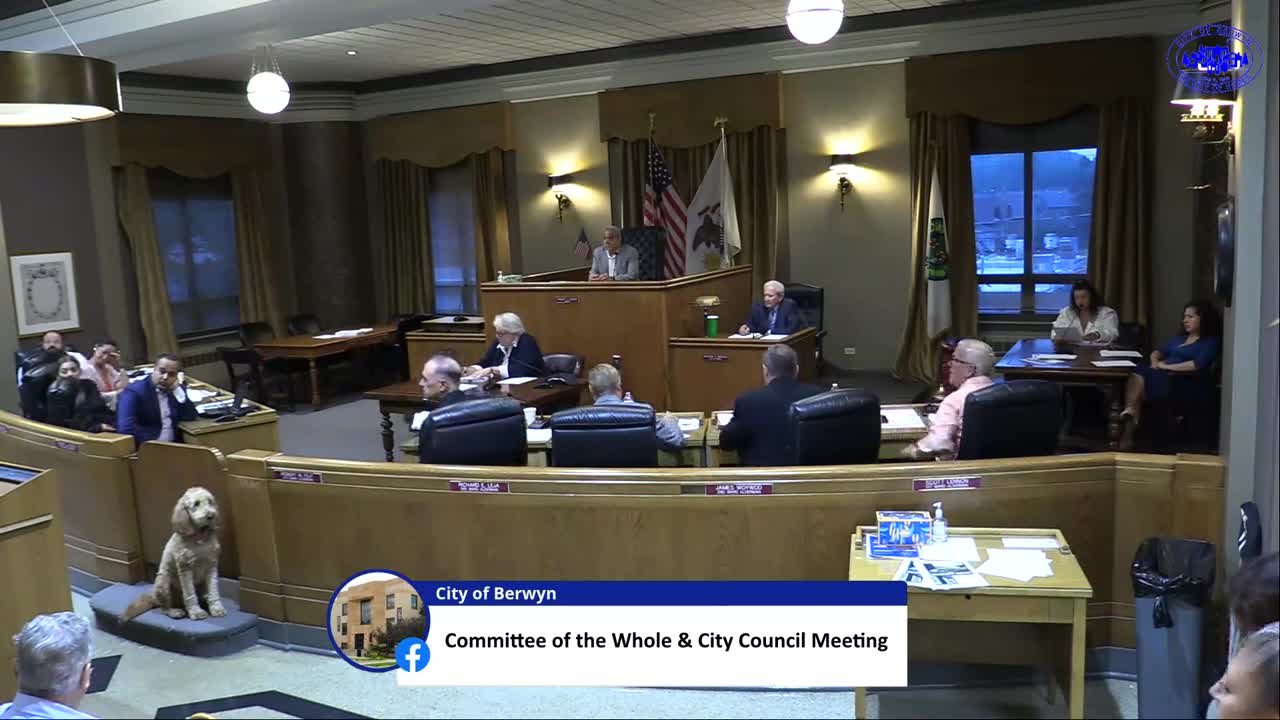EU bans synthetic turf over health risks from forever chemicals
July 19, 2024 | Berwyn, Cook County, Illinois

This article was created by AI summarizing key points discussed. AI makes mistakes, so for full details and context, please refer to the video of the full meeting. Please report any errors so we can fix them. Report an error »

In a recent government meeting, significant discussions centered around the health and environmental risks associated with synthetic turf, particularly those containing rubber crumb infill. Following a comprehensive ban by all European Union countries on synthetic turf with rubber crumb infill due to concerns over PFAS—known as \"forever chemicals\"—local officials are urged to reconsider their own turf projects.
The meeting highlighted the dangers posed by PFAS, which are persistent in the environment and human body, leading to various health issues including reproductive problems, developmental delays in children, and increased cancer risks. The rubber crumb infill, primarily made from recycled tires, has been identified as a major contributor to microplastic pollution, which does not biodegrade and can persist for centuries.
A representative detailed the widespread contamination of PFAS in ecosystems, noting their presence in drinking water, fish, and even compost used in local gardens. This contamination raises serious concerns about public health, particularly for children who frequently use artificial turf fields.
The U.S. Environmental Protection Agency (EPA) has recently classified PFAS as hazardous substances under the Superfund law, indicating a growing regulatory focus on these chemicals. The EPA's strategic roadmap aims to prevent cancer linked to PFAS exposure, emphasizing that there is no safe level of these substances in the bloodstream.
In light of these findings, community members are calling for a delay in the vote on new synthetic turf projects until further research can be conducted on the chemicals involved. They argue that even if a turf product is EPA-approved, it does not guarantee the absence of harmful substances like PFAS.
The meeting underscored a pivotal moment in local governance, as officials are urged to prioritize public health and environmental safety in their decision-making processes regarding synthetic turf installations.
The meeting highlighted the dangers posed by PFAS, which are persistent in the environment and human body, leading to various health issues including reproductive problems, developmental delays in children, and increased cancer risks. The rubber crumb infill, primarily made from recycled tires, has been identified as a major contributor to microplastic pollution, which does not biodegrade and can persist for centuries.
A representative detailed the widespread contamination of PFAS in ecosystems, noting their presence in drinking water, fish, and even compost used in local gardens. This contamination raises serious concerns about public health, particularly for children who frequently use artificial turf fields.
The U.S. Environmental Protection Agency (EPA) has recently classified PFAS as hazardous substances under the Superfund law, indicating a growing regulatory focus on these chemicals. The EPA's strategic roadmap aims to prevent cancer linked to PFAS exposure, emphasizing that there is no safe level of these substances in the bloodstream.
In light of these findings, community members are calling for a delay in the vote on new synthetic turf projects until further research can be conducted on the chemicals involved. They argue that even if a turf product is EPA-approved, it does not guarantee the absence of harmful substances like PFAS.
The meeting underscored a pivotal moment in local governance, as officials are urged to prioritize public health and environmental safety in their decision-making processes regarding synthetic turf installations.
View full meeting
This article is based on a recent meeting—watch the full video and explore the complete transcript for deeper insights into the discussion.
View full meeting
